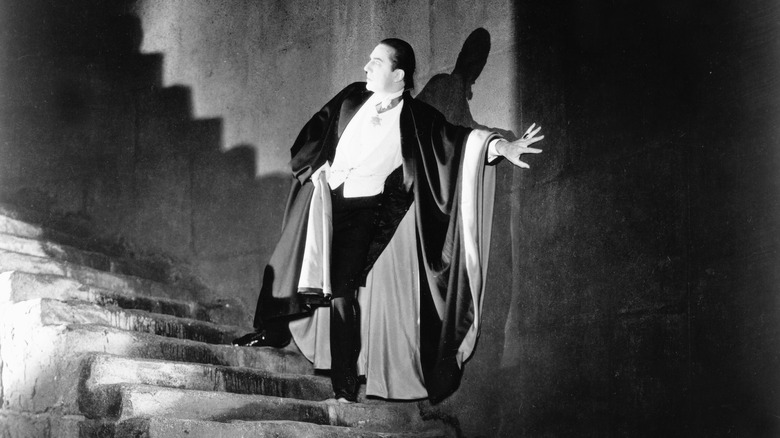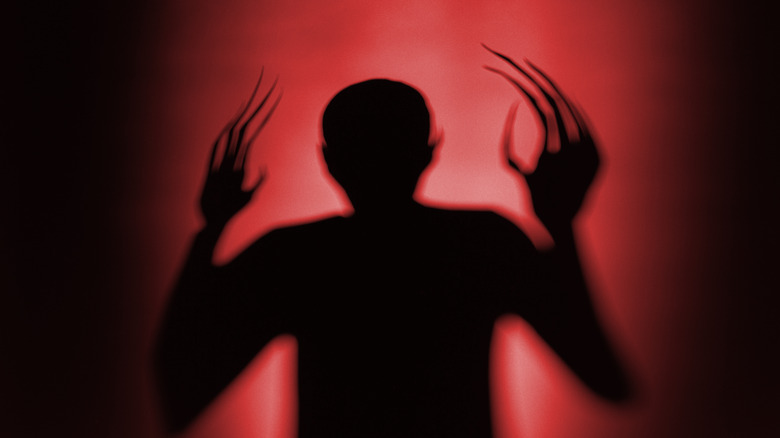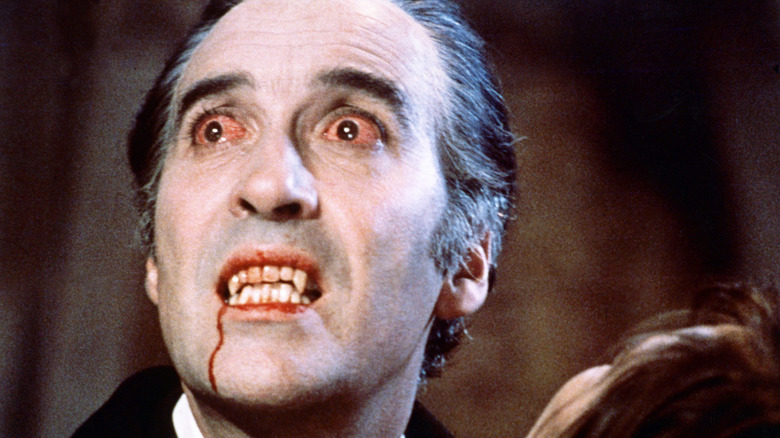Why Are Vampires Said To Fear The Sun?
Say the word "vampire" and anyone within earshot will be likely to conjure the same image in their head. In the popular imagination, vampires are tall, thin, pale, clad in black, noble in bearing, and distinguishable from the living by canine fangs which protrude from between their other teeth, with which they pierce the necks of their victims to suck their blood.
But alongside the image of the well-dressed bloodsucker comes a range of other characteristics related to the vampire's behaviors, powers, and weaknesses. Vampires, it is said, are the living dead, who have returned from beyond the grave after being bitten parasitically by another vampire. Vampires are said to have superhuman strength, to be able to transform into animals such as bats, to cast no reflection, and to hypnotize their victims. It is commonly held that vampires, like werewolves, cannot be killed by conventional methods, but instead must be destroyed in one of a few select ways, be it a stake through the heart, exposure to garlic, or a cross.
But as creatures of the night, it is also often said that vampires are repelled by sunlight — indeed, in some famous depictions, vampires may even be killed by contact with the light of day. The origin of this aspect of the vampire myth is still debated, though it is surprisingly absent from perhaps the most influential vampire story of them all: Bram Stoker's 1897 novel, "Dracula."
folkloric vampires
Though folkloric in origin, the vampires that are familiar to us in popular culture today differ in several significant ways from their traditional predecessors. As noted by Paul Barber in his book "Vampires, Burial, and Death: Folklore and Reality," the figure of the vampire has its roots in several folkloric traditions, particularly in Europe, where it is found in medieval cultures as diverse as those of Romania, Germany, and Greece.
Many tales of vampires are believed to have emerged during periods of mass death, such as plagues, where the quantity of those dying meant the impossibility of proper burial and increased exposure to the then mysterious processes that affect cadavers during decomposition. Early versions of the vampire myth are a far cry from the pale and seductive nobleman popularized in the 19th and 20th centuries. Instead, vampires were often described as bloated and crimson, so much so that in Eastern Europe it was known to compare red-faced drinkers of alcohol to vampires.
The porphyria theory
Nevertheless, some experts believe that the vampiric trait of heliophobia — being afraid of sunlight — is related to an actual disease observed prior to the emergence of modern fictional vampires. The disease in question is called "porphyria," a blood disease that left suffers pale and of which photosensitivity was a known symptom. According to Matthew Bereford's "From Demons to Dracula: The Creation of the Modern Vampire Myth," descriptions of Middle Age sufferers match the characteristics of modern depictions of the creature, and the image of a porphyria sufferer shielding themselves from the light is, therefore, a prototype of the typical night-crawling vampire of popular fiction.
However, not everyone is convinced by this explanation, not least vampire expert Paul Barber, who in "Vampires, Burial, and Death" writes that the theory "sounds plausible only so long as you do not look at it closely." Barber notes that some chroniclers have attempted to double down on the porphyria theory with claims that sufferers drank blood to manage the affliction, but can find no evidence that blood is a cure for the disease or that anyone in the Middle Ages actually thought it was.
Recognizable vampires -- but no heliophobia
Everything changed regarding the representation of vampires in the 19th century, as a succession of popular authors turned to the myth of the bloodsucking creature to explore the societal preoccupations of the day. Everything changed for the vampire figure in 1819, when the young British writer John Polidori took a germ of an idea from his friend Lord Byron — who had conceptualized a vampire tale for a ghost story competition he had entered into with his writer friends, including "Frankenstein" author Mary Shelley, but had failed to write it — and ran with it, creating a suave aristocratic vampire not that dissimilar to the seductive Lord Byron himself.
The idea of a seductive vampire became entrenched later in the century, with the publication of Sheridan Le Fanu's "Carmilla" in 1872, and, of course, Bram Stoker's "Dracula." However, neither of the earlier works contain any suggestion that their title characters feared sunlight, Dracula is actually depicted walking around in daylight, though it is said that his powers are lessened during the day.
A Hollywood death
The image of the 19th-century aristocratic vampire has remained hugely influential on popular depictions of the originally folkloric creature. The performances of actors Bela Lugosi and Christopher Lee, both of whom depicted Bram Stoker's Dracula in popular movies — the 1931 pre-Code version of "Dracula" and the 1958 Hammer horror "The Horror of Dracula" respectively — which are now deemed horror classics. However, both of these movies had an important predecessor: the 1922 silent expressionist film "Nosferatu."
Though now considered one of the most important works of early cinema, "Nosferatu" — which depicts the vampiric Count Orlok, a Draculaesque figure, as a grotesque monster, different to those of later movies — was removed from circulation in many territories due to what was seen as copyright infringement by Bram Stoker's estate. However, despite the overt similarities between "Nosferatu" and Stoker's novel "Dracula," the movie differs from the book in one notable way. Rather than the vampire dying after being stabbed through the heart, as Dracula does in the book, Count Orlok turns to smoke when he is accidentally exposed to the light of the dawn. According to Polygon, this is the first time a vampire was shown on film to have an adverse reaction to sunlight, and it is "Nosferatu" that has done most to popularize this strange characteristic of the bloodsucking creature.



